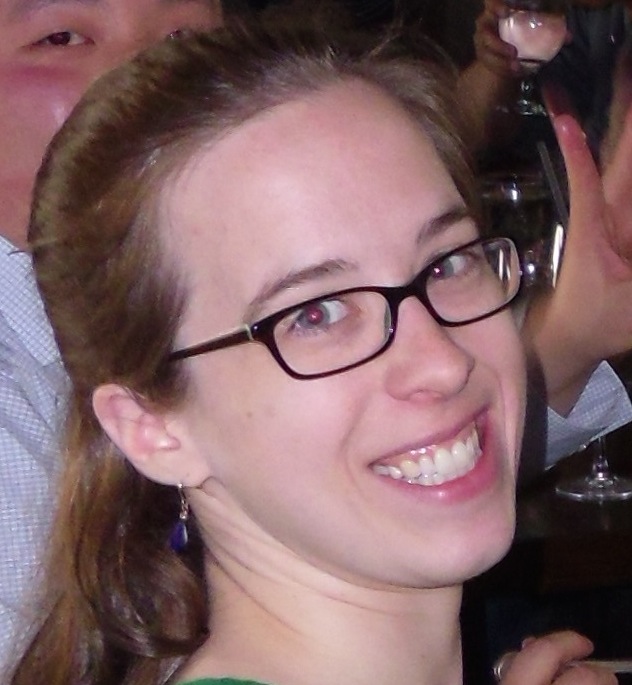Rebecca Conley headed for Saint Peter’s University
 There will soon be two doctors in Rebecca Conley’s house. Her husband is a chemistry professor at Pace University, and she has just completed the defense of her dissertation and will be starting as an Assistant Professor teaching math at Saint Peter’s University in Jersey City, NJ in the fall. “I love explaining math to people and seeing them understand the concepts, especially if it’s teaching students who have previously had bad math experiences. It’s really rewarding to help them realize that they can be good at math.”
There will soon be two doctors in Rebecca Conley’s house. Her husband is a chemistry professor at Pace University, and she has just completed the defense of her dissertation and will be starting as an Assistant Professor teaching math at Saint Peter’s University in Jersey City, NJ in the fall. “I love explaining math to people and seeing them understand the concepts, especially if it’s teaching students who have previously had bad math experiences. It’s really rewarding to help them realize that they can be good at math.”
Although originally from Massachusetts, Rebecca has spent the last 13 years as a New Yorker. As an undergraduate, Rebecca was a double major in political science and mathematics at Pace University. She received her master’s at Hunter College and then came to Stony Brook for her PhD because “Stony Brook has a really good applied math program, and it was close to home.”
Under the direction of her Ph.D. advisor Professor Xiangmin Jiao of the Department of Applied Mathematics and Statistics, Rebecca works on developing a novel extension of the Finite Element Methods (FEM) for solving problems in science and engineering. “FEM involves taking objects and breaking them into little elements that are simulated on a computer. However if the elements are poorly shaped, then FEM doesn’t work,” Rebecca explains. “The element-quality dependence of FEM is a fundamental and challenging problem, and it has plagued the community for decades,” says Prof. Jiao. Together with Prof. Jiao and another IACS Ph.D. student Tristan Delaney, they developed a new method called Adaptive Extended Stencil Finite Element Method (AES-FEM). “Our method, using the adaptive extended stencil with FEM, will work on poorly shaped elements. Think about a car crash. As the car is crushed, all the pieces are distorted. With the adaptive extended stencil, we can look at these distorted pieces and simulate them on a computer, which can help us design safer cars. This method can be used on any dynamic or moving item, like mimicking fluid flow or modeling a heart,” Rebecca explains.
Rebecca’s work has won her both the "Excellence in Research in Computational Applied Math" award and the “Woo Jong Kim Dissertation Award” in the Department of Applied Mathematics and Statistics. “Rebecca is very meticulous in her research. We expect to see some major impacts of this work in the coming years,” says Prof. Jiao. “Her outstanding work makes all of us proud at the Department of Applied Mathematics and Statistics and at IACS.
What are your future goals?
“One of my goals is to get tenure at St. Peter’s. I really like their mission. It is a liberal arts Jesuit school, and they bring education to people who might otherwise not be served. Jersey City is an urban center, and the campus is largely made up of minority, first-generation college students.”
What accomplishments are you most proud of since you arrived here?
“I’m first author on a paper entitled Overcoming element quality dependence of finite elements with adaptive extended stencil FEM (AES-FEM) (http://onlinelibrary.wiley.com/doi/10.1002/nme.5246/full). I’m co-author on another, and we just submitted a third paper on which I am again the first author.”
What advice might you have for other Graduate Students?
“Get experience. If your future goal is to teach, then get some teaching experience. If you are interested in industry, find an internship.”
What is your favorite hobby?
“I love to read so browsing the STRAND provides a great break. It’s within walking distance from my home.”